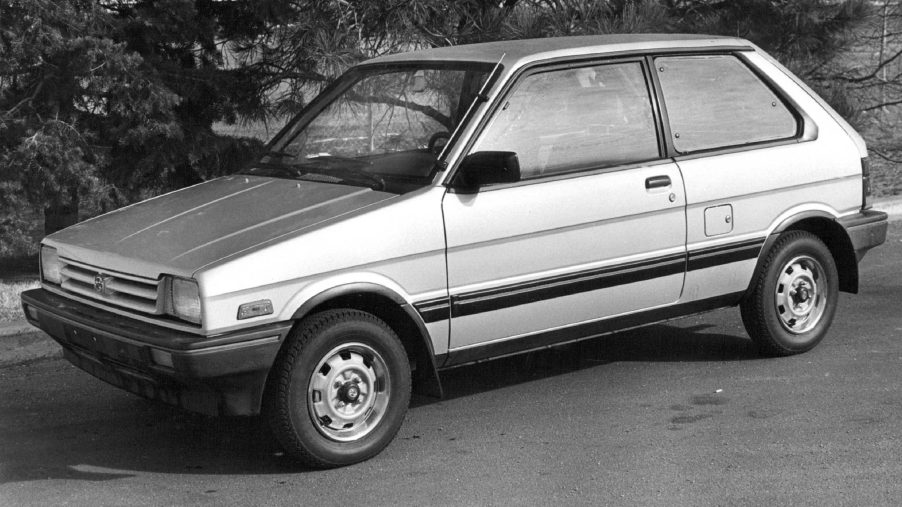
1989 Subaru Justy Brought the CVT to the U.S.
The 1989 Subaru Justy is the all-wheel-drive hatchback that brought the first mass-produced continuously variable transmission to the United States. CVTs are controversial, drawing emphatic support or harsh criticism. Love them or hate them, CVTs have changed automotive history.
Dutch and Japanese engineering form a perfect union
Dutch manufacturer VDT and Subaru parent company Fuji Heavy Industries combined forces to refine the continuously variable transmission further. Together they created the eCVT and revolutionized the shiftless transmission.
The eCVT was the first electronically controlled continuously variable transmission to be mass-produced. The Subaru’s electronic control system allowed engines to reach greater efficiency. CVT technology continues to advance and evolve.
The CVT before the 1989 Subaru Justy

Automotive historians will point out that CVTs were around long before the Justy hit American roads. Automaker Clyno offered CVTs. This early example of the technology was not mass-produced like the transmissions that Subaru offers.
Dutch automaker DAF also released a small number of continuously variable transmissions. The 1959 DAF Variomatic was sold in small numbers in the U.S. market. DAF’s first passenger car offering is the only car ever built with an interesting quirk.
Once the DAF was at top speed, drivers could gradually depress the accelerator, which would cause the car to reach higher speeds. The increased vacuum pressure in the manifold allowed the pully system to shift to a higher ratio. This little trick allowed a noticeable increase in speed with no RPMs change after top speed was reached.
The 1989 Subaru Justy is a chapter in automotive history
The Subaru brand has come a long way since its U.S. debut. The Japanese automaker nearly flopped before many American drivers were even aware of the brand. The first Subaru sold in the U.S. was the 360. The Subaru 360 is commonly referred to as the worst car in history. Consumer Reports wrote a legendary scathing review of the car, which it deemed “Not acceptable.”
The 1989 Justy fared slightly better. Many drivers like the nippy acceleration of the Justy’s three-pot. Some criticized the hatchback for being underpowered. The car was designed for efficiency overpower or speed. Through that lens, the Justy looks like a moderate success.
American markets were well adapted to small, Japanese hatchbacks by the time the Justy hit U.S. shores. American buyers were still slightly wary of small engines and the Subaru brand, but the Justy found its footing with a small fan base. The Justy was the first all-wheel-drive car with an eCVT ever produced.
More than three decades of CVT controversy
Since non-shifting transmissions became, widely available opinions have been split. Critics of the transmission have some valid points, as do fans. Many feel that CVTs are plagued with reliability issues. Others feel this technological advancement is an engineering marvel. The truth lies somewhere in between.
Continuously variable transmissions have rapidly become more common. Automotive technology is constantly evolving. As technology develops, some bugs have to be worked out. Every product on shelves today has undergone revisions and development. Cars are no different. With further refinement and development, CVTs may be the standard of the near-future.


